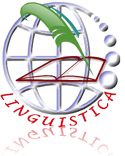PROCESS OF THE WITCH™S DIALOGUES IN SNOW WHITE AND THE HUNTSMAN MOVIE
DOI:
https://doi.org/10.24114/jalu.v2i4.945Abstract
ABSTRACT This study is concerned with Transitivity System, focusing on the Process in Snow White and the Huntsman Movie (the main character of the movie: Ravenna). This study was conducted by using descriptive qualitative design. There are six types of process in 145 clauses. The result of data analysis showed that the numbers in types of process were: Material Process (56.55%), Mental Process (13.1%), Relational Process (24.8%), Verbal Process (3.45%), and Existential Process (2.1%). It means that Material process is the dominant type of process used in Ravenna™s utterances (55.56%). The reason why material process was the most dominant was Ravenna displayed action scenes in the movie. Then the material process influences her act became action scene.Keywords: Functional Grammar, Transitivity, Process.Downloads
Issue
Section
Articles
License
Copyright (c) 1970 Siti Arfah, Rahmah Rahmah

This work is licensed under a Creative Commons Attribution-ShareAlike 4.0 International License.
Authors who publish with this journal agree to the following terms:
- Authors retain copyright and grant the journal the right of first publication with the work simultaneously licensed under a Creative Commons Attribution License that allows others to share the work with an acknowledgment of the work's authorship and initial publication in this journal.
- Authors are able to enter into separate, additional contractual arrangements for the non-exclusive distribution of the journal's published version of the work (e.g., post it to an institutional repository or publish it in a book), with an acknowledgment of its initial publication in this journal.
- Authors are permitted and encouraged to post their work online (e.g., in institutional repositories or on their website) prior to and during the submission process, as it can lead to productive exchanges, as well as earlier and greater citation of published work (See The Effect of Open Access).
- This work is licensed under a Creative Commons Attribution-ShareAlike 4.0 International License.

